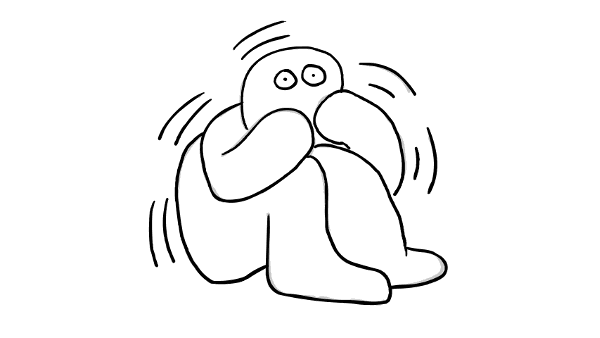Why Do We Tremble When Afraid?
Get answers to:
- Why do angry people shake?
- What happens to the body in fight or flight mode?
- What effect does adrenaline (epinephrine) have on the body?
It all comes from the fight or flight1 mechanism. This is a rapid and powerful survival mechanism that automatically kicks in at any real or perceived danger or threat to survival. It is triggered by the sympathetic nervous system whose primary job is keeping you alive.
When a danger is perceived the sympathetic nervous system triggers the release of adrenaline2 into the body and puts the body into overdrive. This causes:
- increased heart rate.
- increased blood pressure.
- pupil dilatation to take in more light.
- restricted blood flow to the peripheries. (You might experience a chill as less blood flows to the skin.)
- increased blood flow to the major muscles. (You need the blood for power and speed, not fine muscle control.)
- increased respiration.
- increased glycogenolysis – the conversion of glycogen into glucose (which gives the body energy)
- lypolysis – the conversion of fat into glycerol (the glycerol can also be converted for use as energy – your body is pulling out all the stops to supply you with as much energy as possible).
- contracted muscles. (This is what causes hairs to stand up. It also causes you to tremble3.)
- shut down of non-essential systems, like digestion and the immune system, to free up more energy. (This is why stressed people are more likely to get sick because their immune systems are not working at full capacity.)
- loss of peripheral vision. (So you are only focused on the danger immediately in front of you.)
This is an extremely high stress response that happens any time you are in fight or flight mode. People who get extremely angry can shake and tremble as well – it is all part of the same response.
The sympathetic nervous system is one half of the autonomic nervous system and, in general, is responsible for running the body in overdrive when there is danger. The other half is called the parasympathetic nervous system which, in general, is responsible for running and maintaining the body in non-threatening situations.
